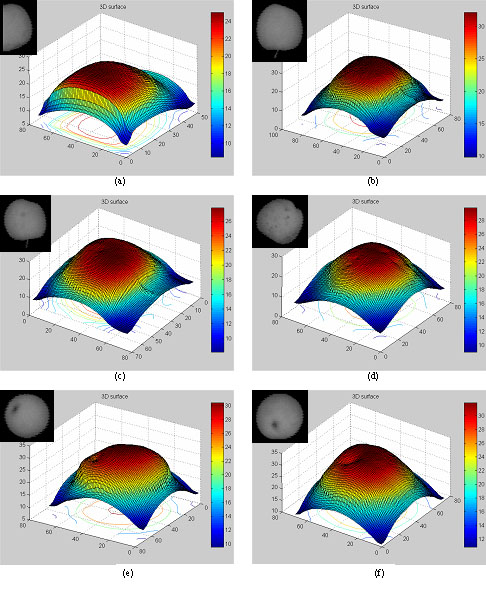|
|
 |
|
3D Surface Reconstruction and Analysis in Apple Stem-end/Calyx Identification
Machine vision based methods are very important techniques which are widely used in apple defect detection and quality grading applications. Currently, 2D NIR imaging of apples is often used to detect apple defects because the defect image intensity is different from normal apple parts. However, a drawback of this method is that the apple calyx also exhibits a similar image intensity to the apple defects. Since an apple calyx often appears in the NIR image, the false alarm rate using the 2D NIR imaging method is high.
In this project, a 2D NIR imaging method is extended to a 3D reconstruction and apple calyx are successfully differentiated from apple defects according to their different 3D depth information. First, the Lambertian model is used to evaluate the reflectance map of the apple surface, and then Pentlandís Shape-From-Shading (SFS) method is applied to reconstruct the apple 3D surface information based on fast Fourier transform (FFT). Pentlandís method is directly derived from perception properties of the human eye, making it close to the way human eyes recover 3D information from a 2D scene. In addition, the FFT reduces the computation time significantly. The reconstructed 3D apple surface maps are shown in the results, and different depths of apple calyx and defects are obtained correctly.
(a) Normal half apple, (b) Normal whole apple; (c) Apple with single defect, (d) Apple with multiple defects; (e) Apple with calyx, (f) Apple with calyx. |
| [Home] [Biography] [Research] [Teaching] [Industry Exp.] [Lab. Personnel] [Collaborators] [Publications] [Links] |
